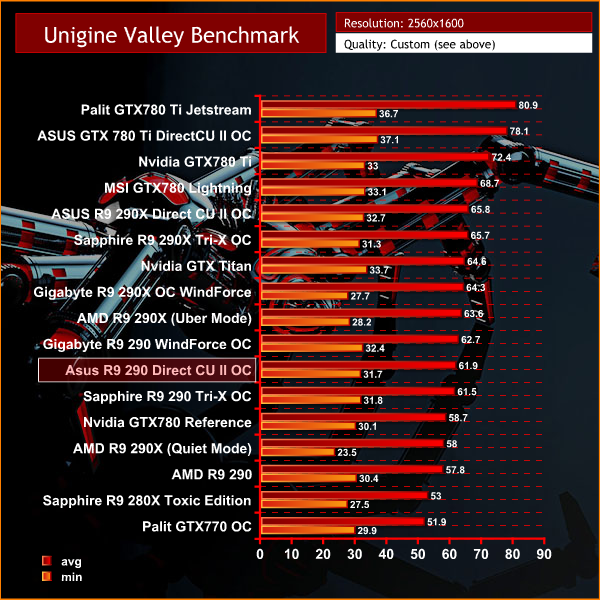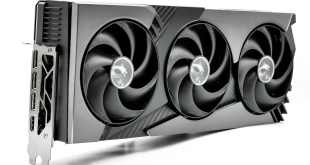Valley Benchmark is a new GPU stress-testing tool from the developers of the very popular and highly acclaimed Heaven Benchmark. The forest-covered valley surrounded by vast mountains amazes with its scale from a bird’s-eye view and is extremely detailed down to every leaf and flower petal. This non-synthetic benchmark powered by the state-of-the art UNIGINE Engine showcases a comprehensive set of cutting-edge graphics technologies with a dynamic environment and fully interactive modes available to the end user.

We test with the settings above both at 2560×1600.


The Asus R9 290 Direct CU II OC scores well in this benchmark, averaging almost 62 frames per second.
 KitGuru KitGuru.net – Tech News | Hardware News | Hardware Reviews | IOS | Mobile | Gaming | Graphics Cards
KitGuru KitGuru.net – Tech News | Hardware News | Hardware Reviews | IOS | Mobile | Gaming | Graphics Cards



Why would they move the VRM sensor to a place that is going to report hot results? surely thats an engineer foobar?
Sapphire rule the AMD roost, because they always do a proper design – and they don’t make nvidia boards either.
I read this review as ASUS cut corners, and have a cooler which isn’t quite at the same level as their competitors. I love their motherboards, but wonder about some of their design decisions once they move to other products.
So the VRM temp sensor doesn’t actually reflect the VRM’s true temperature.
The Cooler itself doesn’t fully cover the gpu (3 of 5 pipes at best it looked like?)
And they are using poorer quality Elpida memory modules, which are well known to be a source of the black screen crashes on the 290 series cards, over the far more stable Hynix modules that sapphire/gigabyte/msi use?
And all of this comes at a serious price premium (£529.99 on ocuk atm vs £439.99 for the gigabyte and £449.99 for the msi versions, which both offer better hardware).
How is this an 8/10 card? Closer to 4/10 surely given the poor decisions made and the price point compared to rival cards.
Not sure where you are getting the prices from, its £389.99 http://www.overclockers.co.uk/showproduct.php?prodid=GX-334-AS&groupid=701&catid=56&subcat=1752.
Unless you are looking at the 290x cards and getting mixed up.
My bad, you’re right there.
Nevertheless, the rest stands for all versions of the 290’s, and it still sits at a ~10% price premium vs other cards of its type, while still having the same hardware flaws. It’s just more pronounced with the X version.